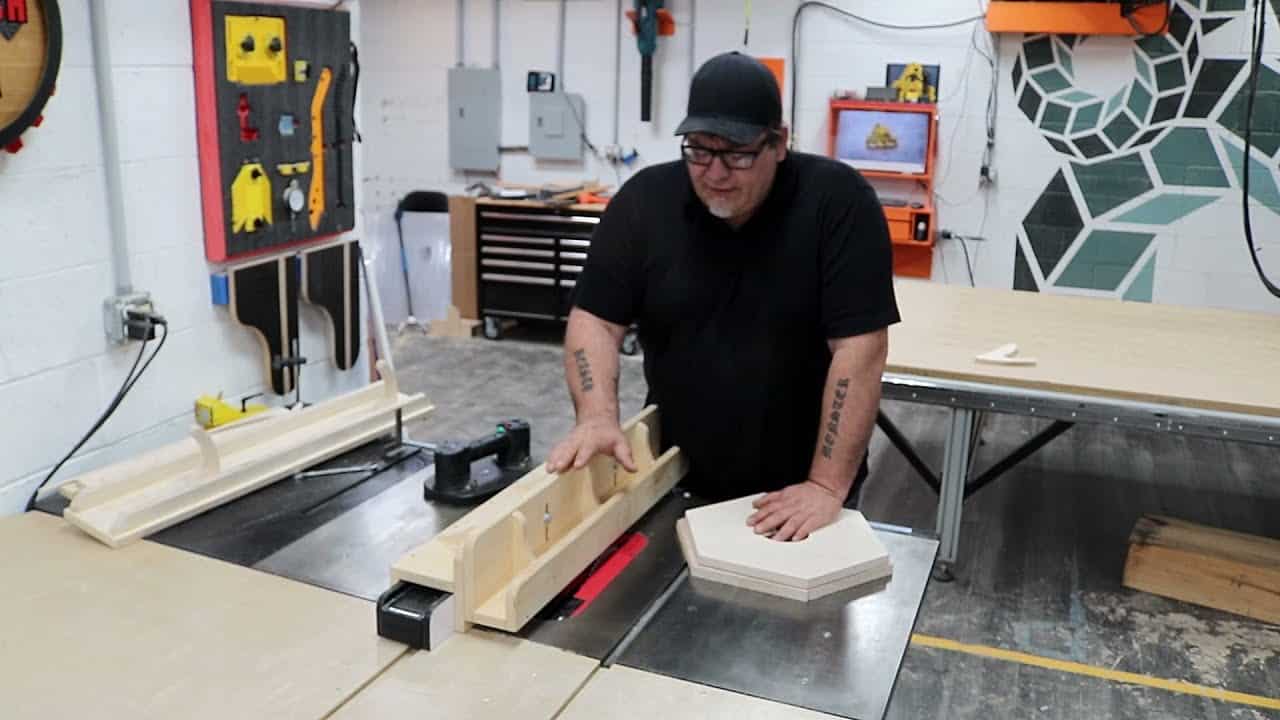Izzy Swan shared the woodworking jig featured in this video.
This video shows a simple, versatile table saw fence that makes flush trimming, template work, and awkward-angle cuts much easier and faster around the shop or on job sites.
Watch the full video and subscribe to Izzy’s channel:
Design and purpose
The fence is built as two main components that work together: a stationary clamping component that rides over the saw fence and a movable component that raises and lowers to meet the blade.
Its primary purpose is to provide a flush reference surface over the blade so a large work hold/guide can ride true, enabling straight ripping, pattern trimming, and clamping options that aren’t practical with a standard fence alone.
Construction overview
Izzy constructs each component from layered plywood panels and reinforcing braces to keep everything as square and vibration-free as possible during cutting operations.
Assembly methods favor speed and strength: glue, 23-gauge pin nails for tacking, screws for structure, embedded nuts for the lift bolts, and a light finish for protection rather than aesthetics.
Installation and adjustment
The clamping half simply slides over the saw fence and secures with two bolts, while two more bolts raise and lower the movable half so the top surface can be aligned to the blade.
Alignment is quick: a square is set to a tooth on the blade, the movable component is raised until flush, and the bolts are tightened so the fence tracks true for subsequent passes.
Three practical uses
Flush trimming and straight-edge ripping
With the fence set flush to the blade, the top surface becomes a large push shoe that lets the user run a straightedge or guide over the workpiece for long, clean ripping cuts.
Non-slip cork or rubber on the guide helps keep short workpieces steady without needing a separate big jig.
Patterning and template cutting
The fence doubles as a template guide for repeatable shapes; parts can be held to a template with tape, hot glue, or a vacuum gripper while being trimmed flush to the template edge.
This approach avoids router tear-out because the saw blade slices cleanly and quickly, making repeated production cuts faster and highly repeatable.
Floating fence for steep and awkward angles
A simple add-on rides over the fence so workpieces can be clamped and fed at much steeper angles than a normal fence would allow, eliminating the need for sacrificial guides in many cases.
While not used every day, this setup solves niche layout and angle problems quickly and safely when the job calls for it.
Why this matters
Small shop jigs that add a few capabilities to basic machines often repay their time cost many times over, and this flushing fence is a compact example of that principle.
It adapts to cabinet and portable saws, speeds up repetitive work, reduces tear-out, and gives a safe, repeatable way to trim, template, or angle-cut parts without complex setups.
Please support Izzy by visiting his website: https://www.izzyswan.com/.
